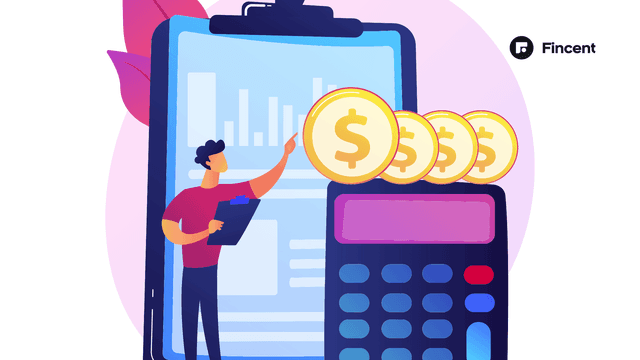- Calculators
- Churn Rate Calculator
Churn Rate Calculator: How to Calculate and Reduce Your Churn Rate?
In today's dynamic business landscape, understanding customer retention and churn rate is vital for sustaining and expanding any company. Churn rate, a pivotal metric in business analysis, gauges the percentage of customers or subscribers discontinuing services within a defined period. For businesses, especially those with subscription-based models, minimizing churn and preserving customer relationships are paramount for sustained profitability and long-term success.
Utilize our Churn Rate Calculator, a user-friendly tool that simplifies the process of measuring customer attrition, enabling informed decision-making for businesses, whether you're an experienced entrepreneur or a newcomer navigating the intricacies of churn rates.
Understanding Churn Rate
Churn rate serves as a powerful indicator of customer satisfaction and loyalty. High churn rates often suggest underlying issues within the product or service, customer support, or overall customer experience. Identifying and addressing the factors contributing to high churn rates is paramount for any business looking to sustain a healthy customer base.
Factors such as product quality, customer service, pricing, market competition, and changing consumer preferences can significantly impact a company's churn rate. Therefore, tracking and analyzing churn rate trends over time can provide valuable insights for businesses to optimize their strategies and improve customer retention.
Introducing the Churn Rate Calculator
To assist businesses in comprehensively evaluating their churn rate, various tools and calculators have been developed to streamline the process. One such tool, the Churn Rate Calculator, simplifies the complex calculation process and provides businesses with a clear understanding of their customer attrition rates.
How to Use the Churn Rate Calculator?
Data Collection: Begin by gathering the necessary data, including the total number of customers at the beginning and end of a specific time period.
Determine Lost Customers: Identify the number of customers lost during that period.
Calculate Churn Rate: Use the formula (Customers Lost During Period / Customers at the Beginning of Period) * 100 to compute the churn rate as a percentage.
Example: Suppose a company had 500 customers at the beginning of the quarter and lost 50 customers during that period. The churn rate would be:
(50 / 500) * 100 = 10%
Interpret Results: Analyze the calculated churn rate to assess the health of your customer base. High churn rates may indicate issues that need immediate attention, while low churn rates can signify customer satisfaction and loyalty.
Benefits of Using the Churn Rate Calculator
- Gain Insights: Understand the effectiveness of your customer retention strategies.
- Make Informed Decisions: Identify areas for improvement and make data-driven decisions to reduce churn rate.
- Track Progress: Monitor changes in churn rate over time to assess the impact of implemented strategies.
- Enhance Customer Satisfaction: Implement targeted improvements to enhance the overall customer experience and increase retention rates.
How to Reduce Churn?
Implement customer engagement strategies, enhance product value, and provide exceptional customer support to improve retention and reduce churn rates.
Implement Effective Customer Engagement Strategies: Foster a strong relationship with your customers by engaging with them through various channels, such as personalized emails, newsletters, and social media interactions. Encourage feedback, listen to their concerns, and make them feel valued and heard.
Enhance Product Value Continuously: Regularly assess and improve your product or service offerings to ensure they align with the evolving needs and expectations of your customers. Incorporate new features, functionalities, or enhancements that add value and solve their pain points effectively.
Provide Exceptional Customer Support: Offer timely and responsive customer support to address any issues or queries your customers might have. Ensure your support team is well-trained and equipped to handle customer concerns efficiently. Promptly resolving issues can significantly improve customer satisfaction and loyalty.
Build a Seamless Onboarding Process: Create a smooth and user-friendly onboarding experience for new customers to familiarize them with your product or service quickly. Offer tutorials, guides, and resources to help them understand the value and functionality of your offering, reducing the likelihood of early churn.
Offer Incentives and Loyalty Programs: Encourage customer loyalty by providing incentives, discounts, or exclusive offers for long-term subscribers. Implement loyalty programs that reward customers for their continued engagement and patronage, fostering a sense of appreciation and belonging within your customer base.
Regularly Seek Customer Feedback: Conduct regular surveys, feedback sessions, or reviews to gain insights into customer satisfaction and identify areas for improvement. Actively incorporate customer feedback into your business strategies, demonstrating your commitment to meeting their needs and expectations.
What Is A Good Churn Rate for a SaaS Business?
A lower churn rate is generally desirable, often indicating higher customer satisfaction and retention. For SaaS businesses, a churn rate below 5% is often considered good, but this can vary based on industry standards and business models.
Churn Rate Interpretation
A 5% churn rate implies that 5% of your customer base discontinued their subscription or service during a specific period.
Churn Rate vs. Turnover
Churn rate specifically refers to the loss of customers, whereas turnover can encompass employee turnover, inventory turnover, or other business metrics.
Tools That Improve Customer Retention
Explore various customer relationship management (CRM) software, personalized engagement strategies, and data-driven insights to boost customer retention and reduce churn.
SaaS Customer Churn Rate Analysis Example
For instance, if your SaaS business had 1000 customers at the beginning of the month and 50 customers discontinued their subscriptions during the same period, your churn rate would be 5%.
Conclusion:
In the competitive landscape of today's business world, understanding and effectively managing churn rate is essential for sustainable growth and success. By utilizing tools such as the Churn Rate Calculator, businesses can gain valuable insights into customer behavior, make informed decisions, and implement targeted strategies to reduce churn and foster long-term customer relationships. As customer retention continues to be a key differentiator for businesses, leveraging the power of data analysis and technology will undoubtedly be a game-changer in building a loyal customer base and ensuring continued success.


